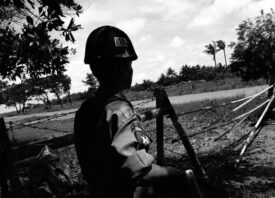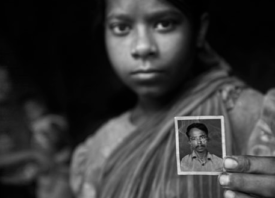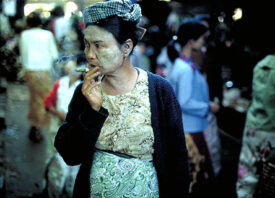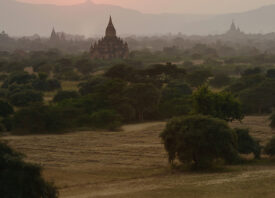Search this site
The Rohingya Crisis: Beyond the Numbers



Over half a million Rohingya men, women and children have fled their homes in Rakhine, Myanmar, since August this year. They have poured into Bangladesh in large numbers, numbers that have dominated every news report since then. Tens of thousands, half a million, hundred thousands – all words that gradually grow abstract with each new statistic detailed. The Rohingya, as we refer to them, are a group of people, that comprise of individuals, each with their own real story of loss, fear, violence, persecution and discrimination. It maybe impossible to hear all these stories, but one photographer decided to attempt to document their voices, their words, and not just the portrait of a people in a major crisis, or a major humanitarian emergency, in the words of a UNHCR statement. While it is crucial to understand the scale of this horror, it is equally important to go deeper and hear their voices.
Adib Chowdhury, a photojournalist based in London, calls Bangladesh his second home and flew over to Arakan as soon as he saw what was unfolding. Once there, he stayed in Cox’s Bazar, a town on the southeast coast of Bangladesh and travelled along the Bangladesh-Myanmar border tracing the crossing. The Arakan Mountains isolate this area from Myanmar and is known as Arakan, a region that has had a long history of political conflict. For Chowdhury, these stories of displacement were similar to those that he had heard from his grandfather, “I heard and read much about the massive displacement that occurred as a consequence of Pakistan’s violence when Bangladesh, (then known as East Pakistan), declared its decision to strive for independence. The scenes of streams of refugees fleeing across paddy fields that I heard about then, were turned into a horrific reality when I set out to cover the crisis unfolding.” This is his project titled Letters From Arakan.

Can you tell us about your project Letters From Arakan?
Bangladesh is my second home and I decided to head over to the border as soon as I saw telltale signs of ethnic cleansing happening. The spontaneity meant I had no plans, other than documenting the general situation, which was truly horrific. I had covered the European refugee crisis and remember coming away frustrated that their situation had been reduced to statistics. It was de-humanising. I was determined for the same not to happen for the Rohingya crisis because 700,000+ people is incredibly difficult to comprehend if you don’t see the scale of it for yourself. Conflicts and the consequences of them consist of individual stories of loss, anger and hope, and my intention is that bringing these to light will help humanise their situation and avoid falling into the trap of viewing them as statistics.It became obvious to me that the nature of these killings and attacks by the military had a targeted nature to them and were tantamount to genocide. The importance of witness and survivor testimonies in these situations are crucial, and I wanted to collate these as well as let the Rohingya tell their own account of what happened to them through me. I asked the Rohingyas I interviewed if they had a message of what they had been through for the international community, or even Burmese government, to hear. Many could not write due to poor literacy levels in the state, and so for them I recorded audio clips. The title of the project is a reference to their land in the Rakhine state, historically known as Arakan, where there is a long historical record of their presence. The Myanmar state and Buddhist nationalists try to erase this historical fact in order to suggest that the Rohingya are illegal immigrants from Bangladesh, thereby justifying their actions in failing to grant them citizenship rights and carrying out these attacks.
What were the challenges you faced while working on this project?
Gathering hand-written letters proved to be extremely difficult as many did not stay in education for a long time. For those that could write, the writing was often broken or difficult to understand. As a result, I asked them to speak aloud what they had written. This was then matched with their writing and translated to Bengali and then English as I could ensure an accurate translation in addition to the help of my fixer. The whole process was extremely labour intensive with each written text going through the same process to ensure accuracy, as well as ensuring it fit the description of events that had occurred. I was editing texts on my train rides back and forth from work and after my office job long into the night for about a month.

What are your plans going forward for this project?
My intention is to get this seen by as many people as possible as I really believe the Rohingya’s voices need to be heard. I can already see the story turning into statistics. My end goal for this would be to have an exhibition in which the public can engage with the work by listening to the audio clips, seeing the letters written by the people who’s portraits they are looking at, and seeing how targeted these attacks were from the map locations I gathered from them.Is there any one experience that stands out for you during your work on this project?
Seeing ordinary rickshaw pullers and farmers, often overlooked by Bangladeshi society themselves, helping the Rohingya out in every way they could was especially moving. They would lend them food, bamboo poles to make their shelter, and even offer their humble homes. There truly was a sense of solidarity in the air when I was there to help the Rohingya. I saw people who had so little give so much during my time documenting there.

You have also covered parts of the conflict in Syria, what differences or similarities did you notice?
I have covered the fallout of the conflict, following refugees as they made their way across Europe. I’ve also covered the Syrian-Lebanese border including a project in Lebanon’s largest camp where the Syrian conflict affects the politics of various vying groups inside it. The similarities I saw was the drive that people had within them to persevere for the safety of their families. Many times I had seen that the instinctive drive to keep each other safe no matter what material loss they had endured, gave people incredible strength. Whether it was to keep going through walking days in the jungle literally eating grass to survive, or to risk boat crossings that many had perished in- they all did it because they perceived whatever it was they left behind was more terrifying than taking a chance with death. That makes me both astounded at the strength of these people, and also alarmed at imagining the situation they must have fled. The most disturbing thing for me was witnessing children in both occasions as some of the worst victims, because their eyes show pure confusion and shock and you know what they are going through will haunt them for their entire lives. I wonder about their future and whether they will receive help and ever be fully welcomed into the country they are moving to. I feel at a complete loss for the times I witnessed parents burying their children, because that is something no parent ever wishes to do.

All images © ADIB CHOWDHURY



